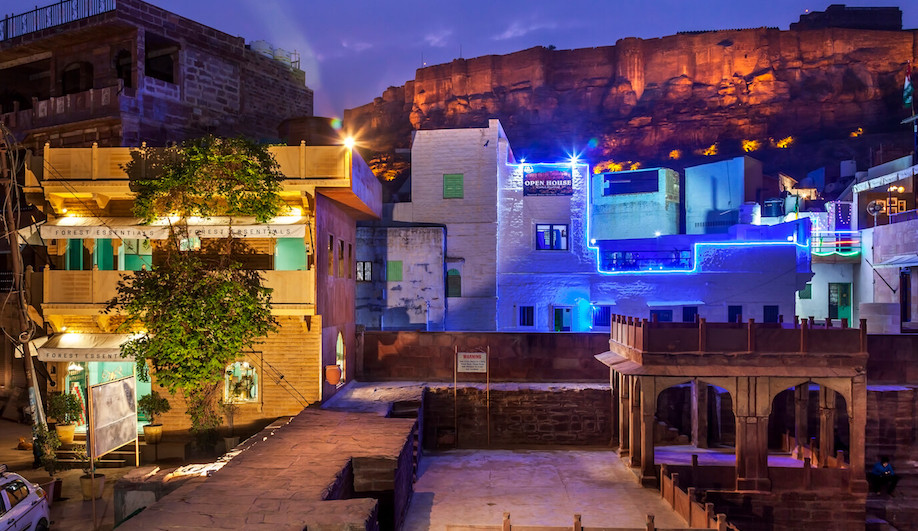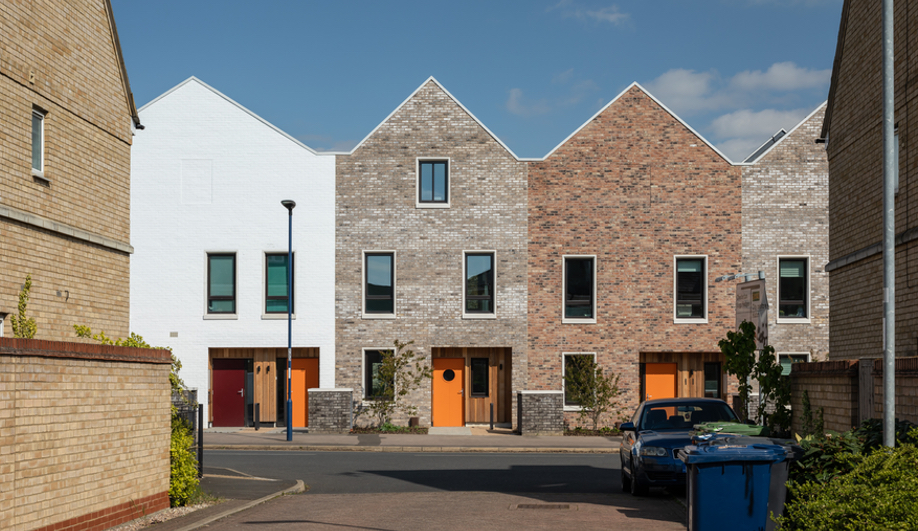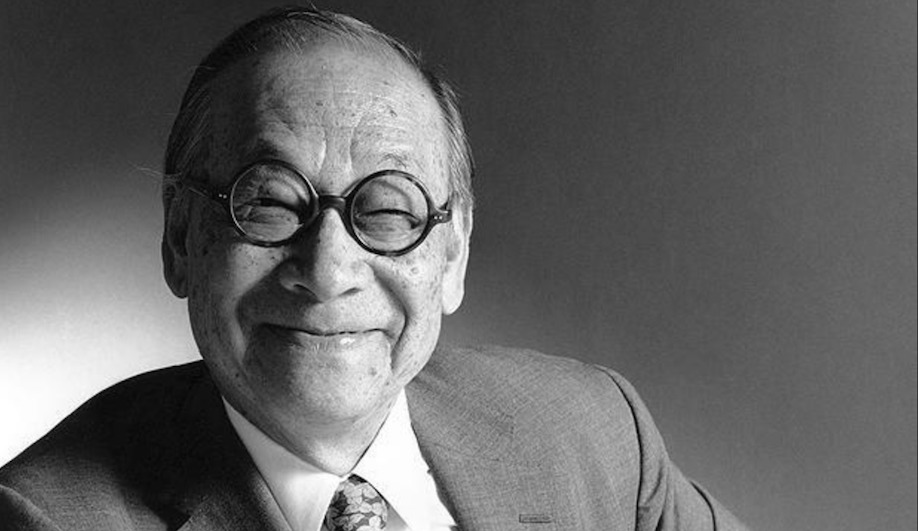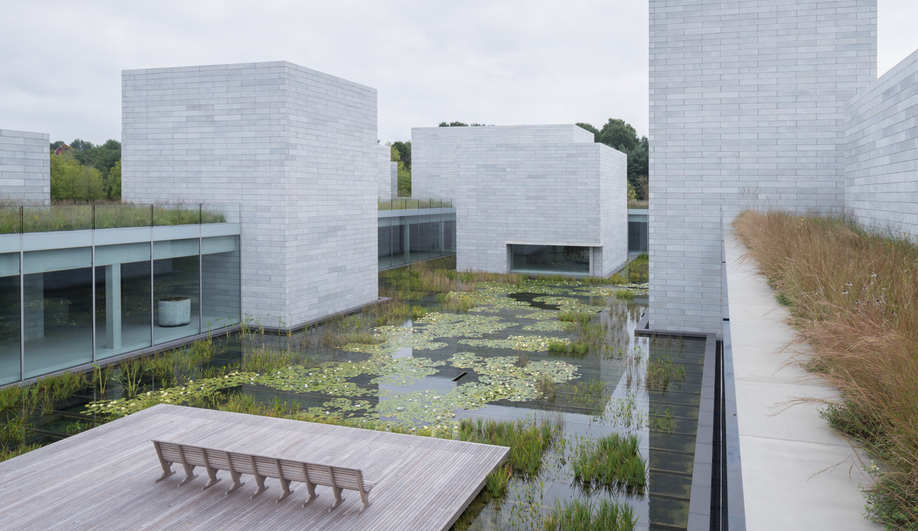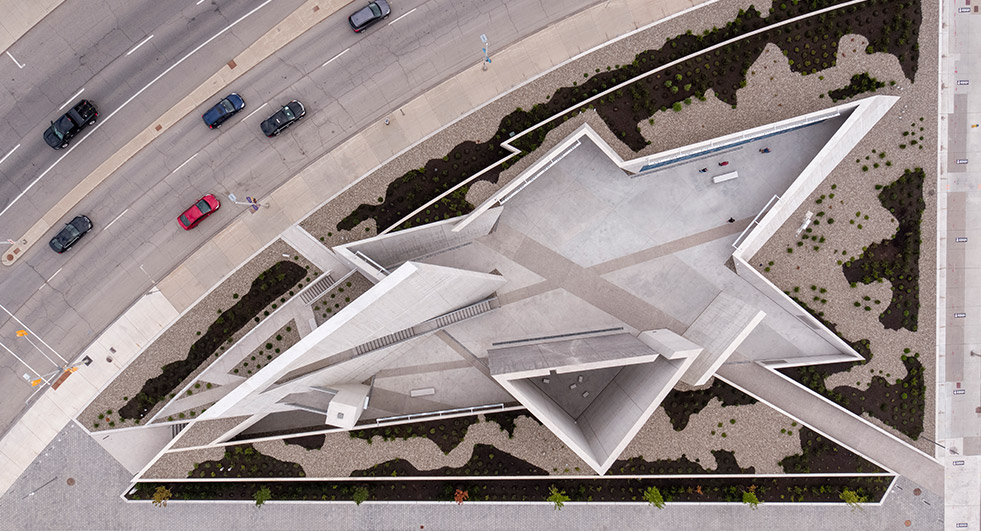
On September 27, with Prime Minister Justin Trudeau leading the proceedings, Canada’s first National Holocaust Monument was unveiled in Ottawa. In front of a crowd of 500 — many of whom are Holocaust survivors — the concrete monument was unveiled at Booth and Wellington, close to the Canadian War Museum. It will serve a solemn reminder, said Trudeau, of the six million lives lost globally to the Holocaust.
The monument, called Landscape of Loss, Memory and Survival, has been in the works since 2014, when Studio Libeskind’s concept was selected from an open competition, beating out six other international submissions, including concepts by Toronto’s Quadrangle, Montreal’s Saucier+Perrotte from Montreal, and a team comprised of Sir David Adjaye and Ron Arad out of London.
The new monument is made primarily of exposed concrete and combines six triangular volumes that create the Star of David.

Studio Libeskind collaborators included museum planners Lord Cultural Resources, artist-photographer Edward Burtynsky, Montreal landscape architect Claude Cormier and scholar Doris Bergen. On the ground, the site is organized into two planes: one that ascends, pointing to the future; and one that descends, which suggests remembrance.
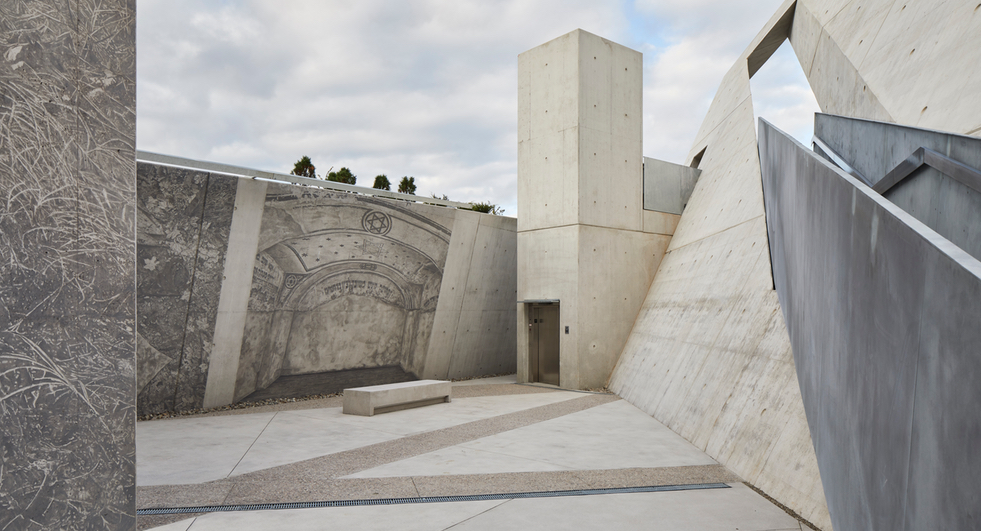
Burtynsky provided large-scale murals depicting Holocaust sites today. The grounds also include three contemplation areas, the four-metre high Flame of Remembrance and The Stair of Hope (shown below), which faces Ottawa’s Parliament buildings. It’s a statement that’s meant to recognize the continuing contributions Holocaust survivors have made to Canada.

“This monument not only creates a very important public space for the remembrance of those who were murdered in the Holocaust, but it also serves as a constant reminder that today’s world is threatened by anti-Semitism, racism and bigotry,” Libeskind said in a statement. “Canada has upheld the fundamental democratic values of people regardless of race, class or creed, and this national monument is the expression of those principles and of the future.”
Canada, notes the monument’s website, was the last Allied nation without a Holocaust monument. That, thankfully, has changed.

